What is Remarketing Attribute • Dynamic Creatives
Remarketing Attribute is a part of the Dynamic Content in Google Studio. What it is and how does it work, I’ll explain in this article. What is Remarketing Attribute? In...
Filter by Category
Filter by Author

Remarketing Attribute is a part of the Dynamic Content in Google Studio. What it is and how does it work, I’ll explain in this article. What is Remarketing Attribute? In...
Posted by Wojtek Andrzejczak

Guide on how to create a Dynamic Profile in Google Studio. It is first to step to build Dynamic Creatives.
Posted by Wojtek Andrzejczak
Remarketing Attribute is a part of the Dynamic Content in Google Studio. What it is and how does it work, I’ll explain in this article.
Contents
In simple words, it allows connecting specific Floodlights U-Variable from Google Campaign Manager with Dynamic Content profile. In which we can define rules when and which combination from the Dynamic Feed should be displayed to the user.
If we have dynamic creatives operated by Google Studio, we could use Floodlight and included U-variables to display a specific product or content to the user. It is called a dynamic retargeting.
To make it work, we need to build dynamic creatives with the feed within Google Studio account.
Floodlights contain U-variables where we can define additional. Information that could be transferred when Floodlight impression fires.
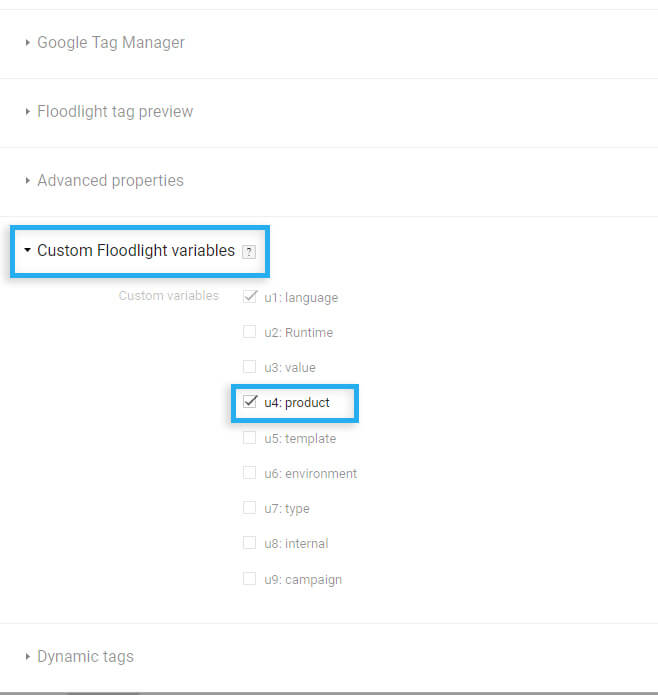
This information could be, for example, an ID of the product that the user has just visited. This ID is added to the Floodlight impression to one of the U-variables.
Product ID included in the Floodlight impression can be used via Remarketing Attribute to find match combination from the Dynamic Feed.
After linking Studio and CM advertiser in the Dynamic Content section, we need to enable the Dynamic Content option.
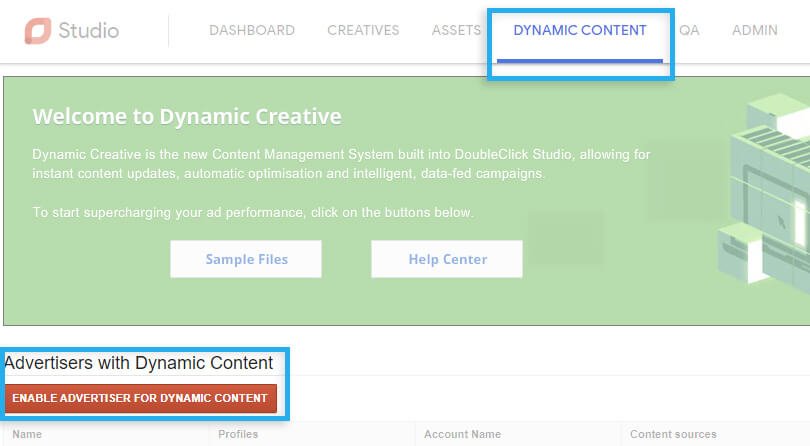
On the list, we should be able to find our advertiser.
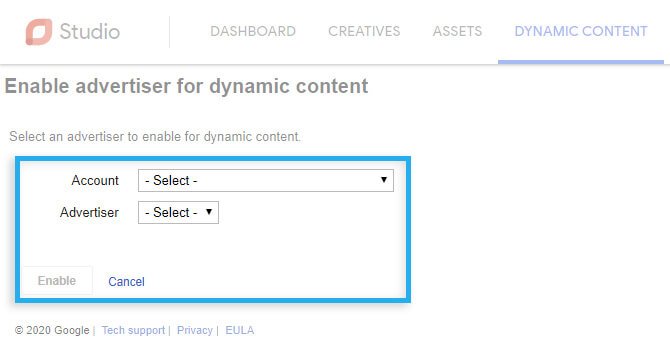
After entering it, we need to navigate to the Remarketing Attributes tab.
From where we can click on the Add button to create new Remarketing Attribute
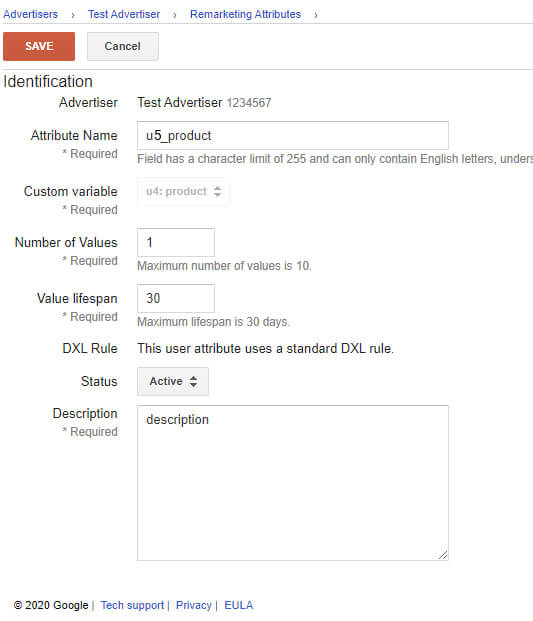
After successful creation, we should see our new attribute on the list.

Note
If you don’t see “Remarketing Attributes” tab, it can be caused by:
– you don’t have linked Studio advertiser with CM advertiser,
– linked CM advertiser is not the “main” one, it might be a child advertiser instead.
A custom variable is linking to Campaign Manager Floodlight configuration, where we have defined all U-variables. If u4 passes our product ID, then we should select this u-variable.
Note
Doesn’t metter which Floodlight fires with our u4 variable. This link collect all values passed in our case u4 variable from all Floodlights.
This is an essential option. It represents how many last values Google should remember. If the user has visited multiple products, and we want to display ads with one of 4 recent visited products, we need to set number 4. Otherwise, please leave 1, which means Google we’ll be showing always last visited product (value).
How long Google should remember the values for the user. It is like an Audience lifetime in Campaign Manager.
After setting up the Retargeting Attribute, we can now proceed to the Dynamic Profile configuration.
Since we’d like to use our u4 variable as a piece of information about product ID to match the last visited product by the user, we need to assign a “Remarketing Value” to one of the fields from the Dynamic Feed.
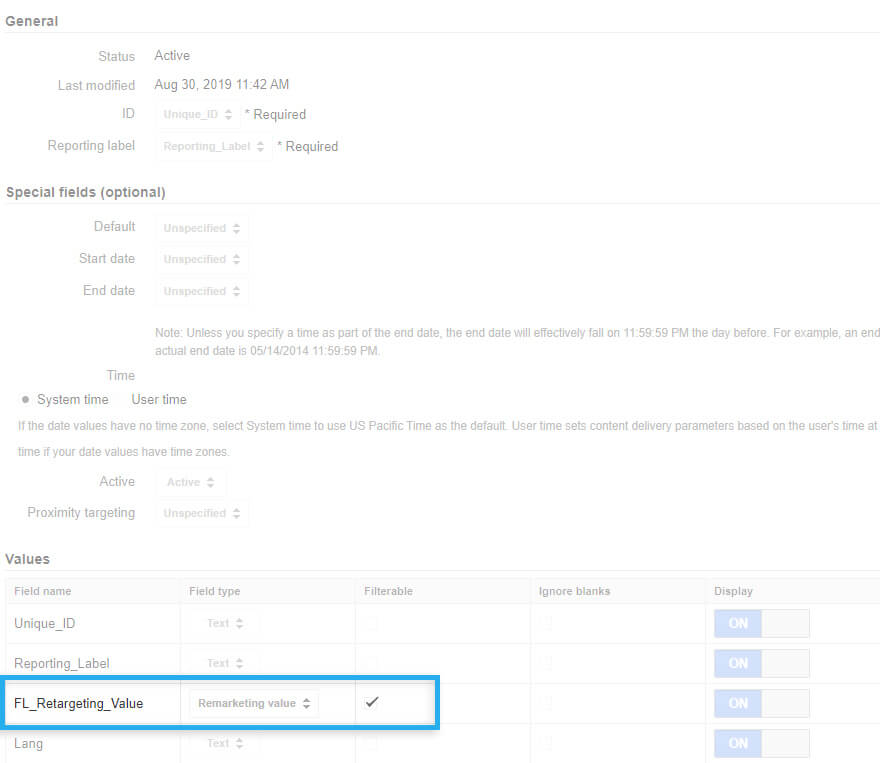
In the 3rd step on the Profile view, it is required to create new Rule, where we define conditions when and Google should match values from the feed and Floodlights.
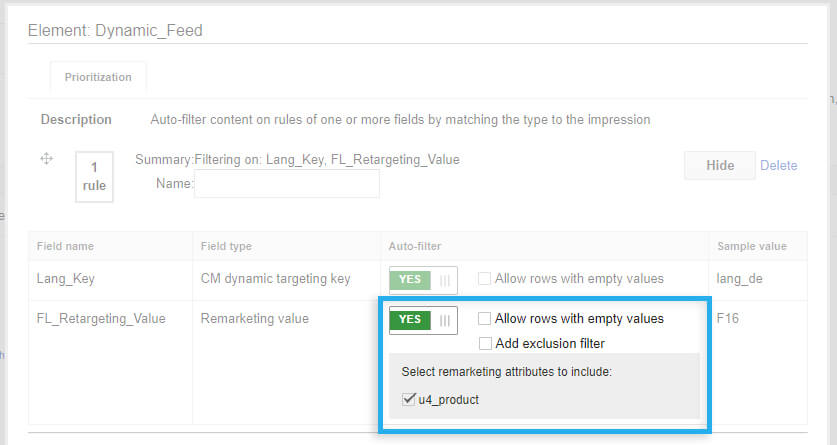
Subscribe to our newsletter!

6 steps to activate Floodlight in DV360 for TrueView for Action campaign.

How to estimate the invalid visits in the campaign reporting? Why this problem exists and how we could avoid report discrepences.